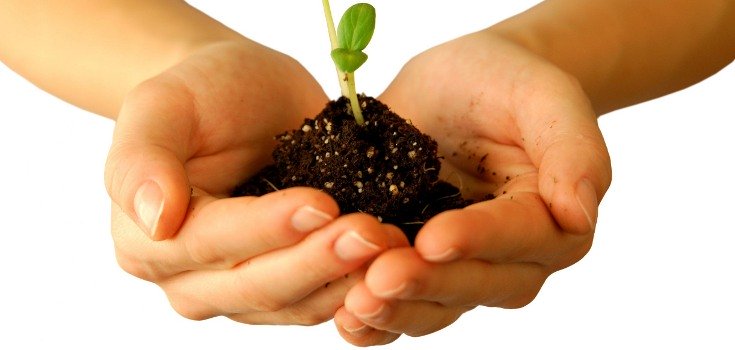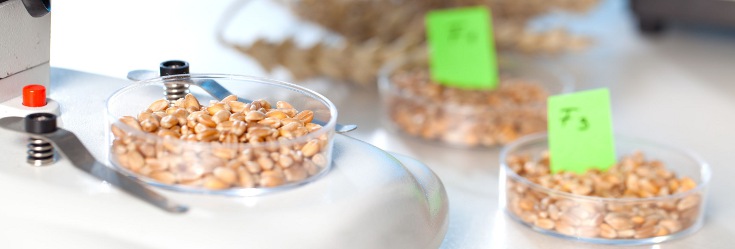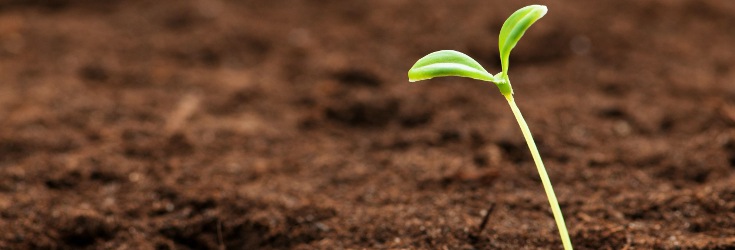How to Pick the Best Organic Seeds & Avoid GMO Seed Varieties
How to Pick the Best Organic Seeds & Avoid GMO Seed Varieties
GMO?
GMO? Hybrid? Organic? Heirloom?
Biotech would like us to believe that genetically modified organisms have been around for ages – that they are the equivalent of crossbred and cross-pollinated seed techniques used by master gardeners and farmers for centuries – but there is a big difference. If you ever plan on buying seeds, knowing the difference between organic seeds, heirloom seeds, and GMO seeds is important.
Seeds are alive, and they adapt – just like we do – to the environment in which they are grown. Just as the new science of epigenetics suggests in human evolution, seeds are greatly influenced by climate, cultural factors like whether or not seeds were brought up on a diet of pesticides, herbicides, fungicides, as well as petro-chemical based fertilizers, and even if music was played while they were being germinated.
For example, Beethoven can help plants grow more than AC/DC. Mi-Jeong Jeong of the National Institute of Agricultural Biotechnology in Suwon, South Korea, and his colleagues researched the growth of rice plants by playing 14 different classical pieces to them.
They then monitored gene expression in the plants – the process by which their DNA code is translated into instructions for biological processes such as growth.
They found that sounds at specific frequencies – 125Hz and 250Hz – made genes rbcS and Ald more active, whereas sound waves at 50Hz made them less active. These chemical changes led to changes in the genesof the plants, and it was all musically induced.
In short, plants respond to their surroundings. So, while 10 different seed companies may advertise a certain type of the ‘same’ seed, they aren’t really the same at all. Therefore, a few important questionsmust be asked before trying to transplant a seed into your garden or farmland. These questions should include:
What is this seed adapted to already? Does the seller know the original source of the seeds they used to grow their crops? Am I buying seed from a re-seller, or someone who isn’t really a plant breeder?These are good inquiries to start with, but you can get even more specific about where you get your seeds.
Read: 76% of Seed Market Patented by Corporations
Try to Purchase Open-Pollinated, Organic Seeds First
Seed sourcing is crucial in open-pollinated (OP) plants, and if you are saving seeds for a while before you plant, you will want to be sure that you purchase from an ethical seed dealer that stewards impeccable regional breeding with non-GMO methods. Micaela Colley, executive director of Organic Seed Alliance(OSA) says an OP is “a living, breathing organism that, unlike a hybrid, is meant to evolve over time.”
She explains that as long as pollen isn’t shared between different varieties within the same species, the resulting open-pollinated seed will remain true to type and will produce a next generation that looks mostly like its parent plant. OP seed requires diligent management of each year’s seed crop: weeding out weaklings and individuals that veer off course, while also selecting for plants that show improved vigor or disease resistance. But in the long term it is worth it.
Avoid Highly-Inbred Plants
Sure, GMOs are the worst, but some hybrid varieties, created through two genetically distinct, homozygous (highly inbred) parents can end up giving you some funky plants and seeds that have a very low germination rate. They are sometimes more prone to disease, and they don’t usually grow true to type.
The next generation of plants grown from these seeds will likely express some surprising traits – some which you may not find desirable. It is for this reason that many hybrid seed growers have to re-purchase their seeds every season. Though hybrid seeds became popular in the 1950s with many farmers due to their uniformity, they also led to vast fields of monocultures, and were really only commercially viable – not a boon to the sustainability of Mother Nature at her best. OP seeds are loaded with variability and diversity because their seed is produced by pollen flowing freely between all the genetically similar parents.
This is another reason that organic farmers are incensed by the presence of GMOs. You can’t easily control open pollination, and it messes with the grand design of nature to give us healthy, naturally disease resistant plants.
Don’t Get Sucked into the Term ‘Heirloom Seed’ – It Doesn’t Mean Much Anymore
Sadly, heirloom seeds are often sold without any guarantee for quality or long-term success of the plant. For example, many people don’t realize that all heirlooms are open-pollinated, but not all open-pollinated varieties are heirlooms. Mother Earth News states that, “An heirloom is a type of open-pollinated variety that, by various definitions, is either at least 50 years old, or 100, or has survived outside the commercial seed market for more than 50 years by being passed down within one family or community.”
So, while this is a great botanical heritage we can all share, keep in mind that some ‘heirloom’ seeds are better than others.
That being said, heirlooms are absolutely critical to our agricultural success, and are loaded with precious genetic diversity. Seed Savers Exchange, however, confirms that a strain of an heirloom (or any OP) that hasn’t been cared for becomes a glimmer of its genetic origins.
Nonetheless, many master gardeners have passed down generational knowledge, committing more than 100 years, sometimes, to preserving and reviving heirloom varieties.
The next time you go to a farmers market, make sure you don’t assume that one seller of heirloom seeds or plants is the same as the next.
In summary, know as much about your seed seller as you know about your seeds, and ask lots of questions. Once you have a great source for organic, OP seeds, share them with your friends and family – then you can really start an underground resistance to the biotech influence.
| About Christina Sarich: | |
| Christina Sarich is a humanitarian and freelance writer helping you to Wake up Your Sleepy Little Head, and See the Big Picture. Her blog is Yoga for the New World. Her latest book is Pharma Sutra: Healing the Body And Mind Through the Art of Yoga. | |
Other Popular Stories:




Post a Comment